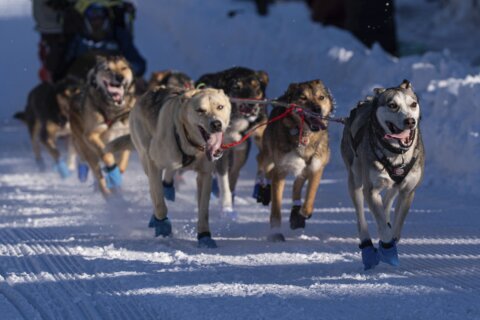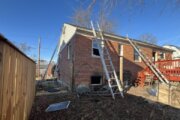Watching climbing at the Paris Olympics makes it seem as if it’s a sport that would be completely out of the question for a weekend athlete. The speed, strength and dexterity with which the competitors scale the walls appear impossible to match.
Think again.
Climbing might look terrifying on television, with and without ropes. Whether it’s watching “Free Solo” or roped climbers making an ascent on one of the world’s highest peaks, one thing is clear: it’s not for the easily queasy. That’s not the climbing we are talking about here.
“Climbing’s a terrific workout from your fingers to your toes and right through your core,” said Eric Horst, who runs the website trainingforclimbing.com. “The beauty of climbing gyms is you have this very controlled setting where anybody can walk in and take a climbing lesson and in the first hour start climbing the walls.”
Recreational climbing doesn’t look much different from what’s being performed in the Olympics. Don’t worry, you won’t have to hang from a hold by your fingertips at a crazy angle – at least at first! Climbing has a level for everyone.
Making the commitment is the toughest part of getting started
With over 600 climbing gyms in the United States, the opportunity to get started is there. Gyms offer climbing with ropes and without for beginners. Whichever you choose, you can be certain that given a little time you will get a well-rounded workout.
“The advent of indoor climbing walls has changed accessibility, so it’s easier for people to join and take part in the sport” said Nick Draper, professor of sport and exercise science at the University of Canterbury in New Zealand. “One of the things that limits people being active is accessibility.”
New climbers can start with bouldering, climbing without ropes on shorter walls up to about 15 feet (4 1/2 meters), with padded floors to cushion their landing when they fall or jump down. Another option is top rope climbing in which the climber is tied into a rope and belayed by a partner. Top rope walls are typically in the 40- to 60-foot range (12–18 meters). More advanced is lead climbing – a climber clips their rope into protection called a quickdraw as they ascend to prevent a long fall – and, of course, there is outdoor climbing on real rock.
Walking into a climbing gym for the first time can be intimidating, said Ivan Barcinal, general manager of Reach Climbing and Fitness in Bridgeport, Pennsylvania.
“The biggest thing is taking that first step and committing to it,” he said.
Barcinal recommends taking an introductory class such as a top rope belay lesson. You’ll be taught how to put a harness on the proper way and to tie your figure eight follow-through knot. He said you learn “how to properly belay, managing your rope, so your partner can safely climb or get lowered.”
But if you don’t want to mess around with ropes or prefer to stay closer to the ground your first time out, you can try the boulder wall, he added. Most gyms offer an orientation on how to properly fall so you don’t injure yourself.
“The thing about bouldering is, because its low to the ground, because a lot of times you’re resting, you’re actually hanging out and talking to people so it’s more of a community vibe,” he said.
The key is to start where you feel comfortable. Climbing gyms make it easy to work at your level. Draper suggests starting with bigger holds on walls with lower grade climbs.
He recommends new climbers, “start really steadily and build up your muscular endurance and your flexibility.”
It’s a full body workout
Horst has established over 400 first ascents – the first time a climber takes a route or makes it to top of a mountain – in more than 40 years of climbing. In his books and seminars he emphasizes the benefits to your physical health.
Even as a beginner you quickly will feel the effects of climbing several times a week – and not just in your fingers and arms.
Climbing “physically works most of your body parts in a variety of ways,” he said. “There are elements of strength when you have to grab a small hold and pull really hard. Then there’s elements of endurance when you’re climbing a longer route, and you get pumped.”
He added: “Just getting on a climbing wall, especially one that’s slightly overhanging – it only has to overhang 5 or 10 degrees – and it really starts to demand that the core come into play to get your body into proper positions.”
For those who are afraid of heights, sport climbing in a controlled environment has its mental health benefits, too.
“There’s the mental skillset that involves fear management and arousal control, trying to relax as much as possible and regulate your breathing,” Horst said.
The workout you get from climbing isn’t just for the young and already fit. It’s an activity you can keep participating in even as you age.
“We lose functionality as we get older in our upper body, so climbing allows us to develop and maintain those muscles of the upper body,” Draper said.
Climbing is a social sport
Rachel Chalik, who first started climbing 10 years ago but has only been at it with consistency for the past year and a half, enjoys the camaraderie in the gym. She likes the support she receives when she successfully completes a climb at the gym, but what’s more community building is having a reassuring partner for the times when she doesn’t finish a climb. It makes that failure sting a little bit less.
“The beauty of the sport is that people are incredibly supportive of each other, whether it’s a beginner working on their first V1 problem and finally getting it, or a seasoned climber who just sent their first V8 in the gym,” said Chalik, who climbs at Philadelphia Rock Gym in Wyncote, Pennsylvania, referring to the scale that ranks the difficulty of boulder problems.
“The excitement for each other is very real because everybody knows how hard it is to get further in your abilities in climbing,” she said.
__
Jonathan Elderfield is a product manager at The Associated Press and is an American Mountain Guides Association (AMGA) accredited single pitch climbing instructor.
Copyright © 2025 The Associated Press. All rights reserved. This material may not be published, broadcast, written or redistributed.







